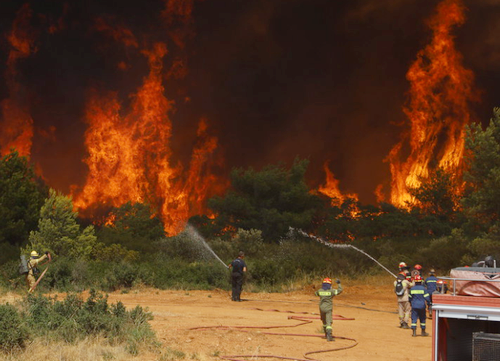
NEW YORK, New York January 17, 2022 (ENS) – “Science leaves no room for doubt: Climate change is the existential threat of our time,” said NASA Administrator Bill Nelson.
“Eight of the top 10 warmest years on our planet occurred in the last decade, an indisputable fact that underscores the need for bold action to safeguard the future of our country – and all of humanity,” Nelson said Thursday releasing the climate statistics for 2021 as compared with other years going back more than a century.

The year 2021 set no global record for climate warming, but even so, the year was not cool. It tied with 2018 as the sixth warmest on record, both the U.S. National Aeronautics and Space Administration, NASA, and the National Oceanic and Atmospheric Administration, NOAA, found in independent analyses.
Continuing the planet’s long-term warming trend, global temperatures in 2021 were 1.5 degrees Fahrenheit (0.85 degrees Celsius) above the average for NASA’s baseline period, according to scientists at NASA’s Goddard Institute for Space Studies in New York. NASA’s baseline runs from 1951-1980; it’s used for comparison to track how global temperatures change over time.
NASA’s temperature record shows that Earth in 2021 was about 1.9 degrees Fahrenheit (or about 1.1 degrees Celsius) warmer than the late 19th century average, the start of the industrial revolution.
This warming trend around the globe is due to human activities that have increased emissions of carbon dioxide and other greenhouse gases into the atmosphere, NASA explains.
“The planet is already seeing the effects of global warming: Arctic sea ice is declining, sea levels are rising, wildfires are becoming more severe and animal migration patterns are shifting. Understanding how the planet is changing – and how rapidly that change occurs – is crucial for humanity to prepare for and adapt to a warmer world,” NASA said.
Constant Monitoring is the Key
Weather stations, ships, and ocean buoys around the globe record the temperature at Earth’s surface throughout the year. These ground-based measurements of surface temperature are validated with satellite data from the Atmospheric Infrared Sounder (AIRS) on NASA’s Aqua satellite.

Scientists analyze these measurements using computer algorithms to deal with uncertainties in the data and quality control to calculate the global average surface temperature difference for every year.
NASA compares that global mean temperature to its baseline period of 1951-1980. That baseline includes climate patterns and unusually hot or cold years due to other factors, ensuring that it encompasses natural variations in Earth’s temperature.
Many factors affect the average temperature any given year, such as La Nina and El Nino climate patterns in the tropical Pacific Ocean.
For example, 2021 was a La Nina year and NASA scientists estimate that it may have cooled global temperatures by about 0.06 degrees Fahrenheit (0.03 degrees Celsius) from what the average would have been.
A separate, independent analysis by NOAA also concluded that the global surface temperature for 2021 was the sixth highest since record keeping began in 1880. NOAA scientists use much of the same raw temperature data in their analysis but have a different baseline period (1901-2000) and methodology.
“The complexity of the various analyses doesn’t matter because the signals are so strong,” said Gavin Schmidt, director of NASA’s Goddard Institute for Space Studies, NASA’s leading center for climate modeling and climate change research. “The trends are all the same because the trends are so large.”
GISS is a NASA laboratory managed by the Earth Sciences Division of the agency’s Goddard Space Flight Center in Greenbelt, Maryland. The laboratory is affiliated with Columbia University’s Earth Institute and School of Engineering and Applied Science in New York.
NASA’s full dataset of global surface temperatures for 2021, as well as details of how NASA scientists conducted the analysis, are publicly available from GISS.
Administrator Nelson is not just an executive. A Democrat, he served in the U.S. House and Senate from 1979 to 2019, representing Florida. In January 1986, Nelson became the second sitting member of Congress to fly in space, when he served as a payload specialist on the Space Shuttle Columbia.
Nelson is confident that, “NASA’s scientific research about how Earth is changing and getting warmer will guide communities throughout the world, helping humanity confront climate and mitigate its devastating effects.”
For more information about NASA’s Earth science missions, click here.
Featured image: Wildfire devours a forest in Shasta County, California while an aerial fire crew drops Phos-Chek on the blaze. An 88 percent water-based retardant mixed with a non-toxic commercial grade fertilizer, Phos-Chek has a clay-based dye to make it visible from the air and on the ground. September 24, 2021 (Photo courtesy CalFire)



